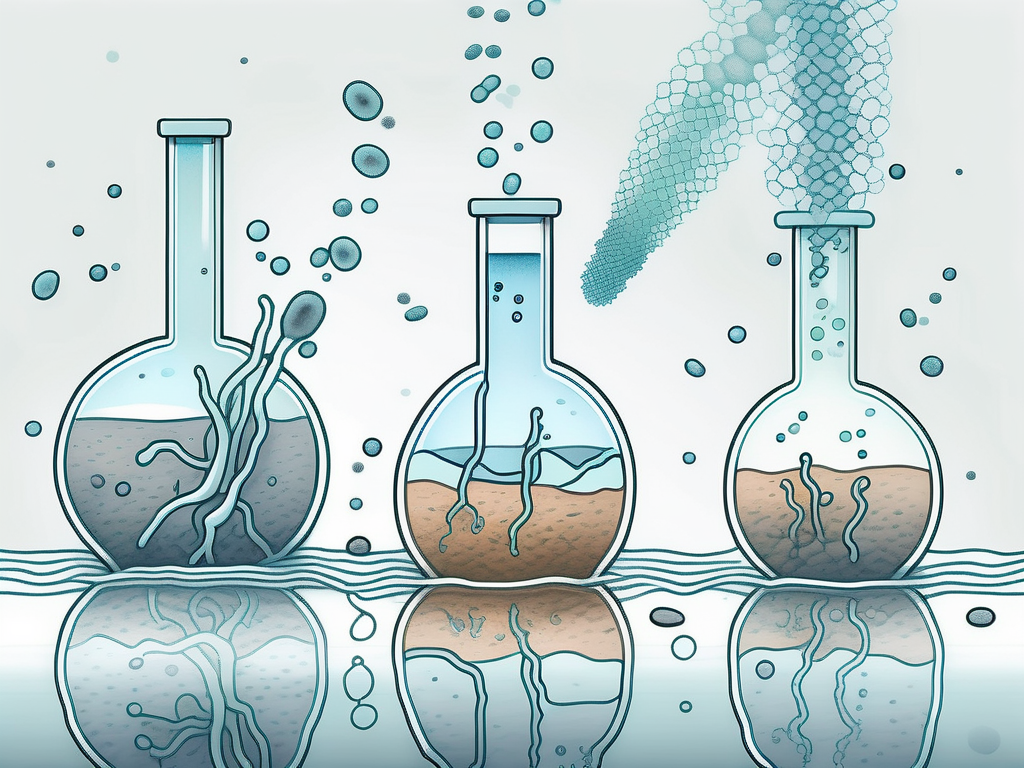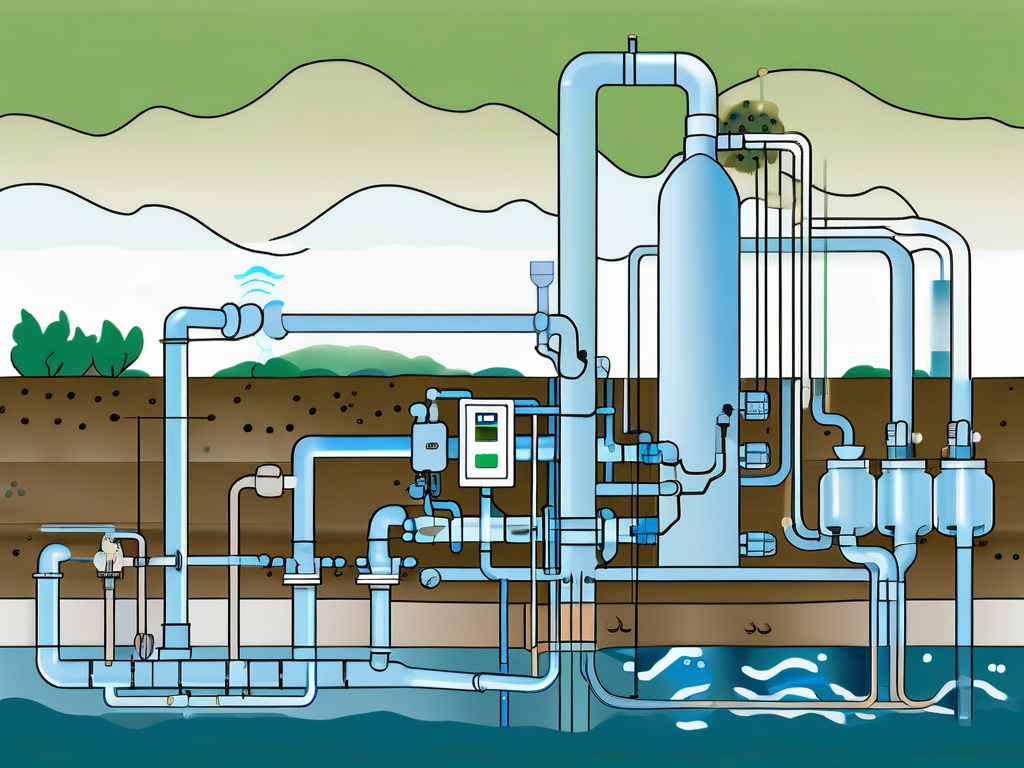
Biochemical Oxygen Demand: Wastewater Treatment Explained
Biochemical Oxygen Demand (BOD) is a critical concept in the field of wastewater treatment. It refers to the amount of oxygen required by microorganisms to decompose the organic matter present in water under aerobic conditions. The BOD value is a key indicator of the organic pollution level in water and is used to assess the effectiveness of wastewater treatment processes. The lower the BOD value, the less organic matter present, indicating a more efficient treatment process.
The BOD test measures the amount of oxygen consumed by bacteria and other microorganisms while they decompose organic matter under aerobic conditions at a specified temperature over a particular period. The test is widely used in wastewater treatment plants to evaluate the degree of pollution in water bodies and the efficiency of treatment processes. This article will delve into the intricate details of Biochemical Oxygen Demand and its significance in wastewater treatment.
Understanding Biochemical Oxygen Demand
The concept of Biochemical Oxygen Demand is rooted in environmental science and is vital for maintaining the health of aquatic ecosystems. When organic waste enters a water body, aerobic bacteria break down the waste. This decomposition process requires oxygen, leading to a decrease in the amount of dissolved oxygen available for other aquatic life forms. The BOD value quantifies this demand for oxygen, providing a measure of the organic pollution level in the water.
High BOD values indicate a high concentration of biodegradable material, which can lead to a significant decrease in dissolved oxygen levels as the waste is decomposed. This can be detrimental to other aquatic life forms, leading to conditions such as hypoxia or even anoxia. Therefore, understanding and managing BOD is crucial for maintaining the health and diversity of aquatic ecosystems.
The BOD Test
The BOD test is a bioassay procedure that measures the oxygen demand of biodegradable substances in water under aerobic conditions. The test involves incubating a water sample at a specific temperature (usually 20°C) for a set period (typically 5 days, hence the term BOD5). The amount of oxygen consumed during this period is then measured and reported as the BOD value.
The BOD test is not without its limitations. It is a lengthy process, and the results can be influenced by various factors such as temperature, pH, and the presence of certain substances in the water sample. Despite these limitations, the BOD test remains a widely used method for assessing the organic pollution level in water due to its relative simplicity and cost-effectiveness.
Significance of BOD in Wastewater Treatment
In the context of wastewater treatment, BOD is a key parameter that is regularly monitored. The primary goal of wastewater treatment is to reduce the BOD level before the water is discharged back into the environment. High BOD levels in the discharged water can deplete the oxygen levels in the receiving water body, negatively impacting aquatic life.
Furthermore, regulatory bodies often set BOD limits for wastewater discharge, and failure to meet these limits can result in penalties. Therefore, understanding and effectively managing BOD is not only crucial for environmental protection but also for the operational and financial performance of wastewater treatment plants.
Components of Biochemical Oxygen Demand
Biochemical Oxygen Demand is composed of two main components: Carbonaceous Biochemical Oxygen Demand (CBOD) and Nitrogenous Biochemical Oxygen Demand (NBOD). CBOD refers to the oxygen demand associated with the decomposition of organic carbon compounds, while NBOD refers to the oxygen demand associated with the nitrification of ammonia and organic nitrogen compounds.

CBOD is typically the larger component of the total BOD and is often the primary focus in wastewater treatment processes. However, NBOD can also contribute significantly to the total BOD, particularly in wastewater with high ammonia concentrations. Therefore, both CBOD and NBOD need to be considered in the design and operation of wastewater treatment processes.
Carbonaceous Biochemical Oxygen Demand (CBOD)
CBOD is the portion of the total BOD that is due to organic carbon compounds. These compounds are decomposed by bacteria and other microorganisms, a process that consumes oxygen. The CBOD value is a measure of the amount of oxygen required for this decomposition process.
CBOD is a significant factor in wastewater treatment because high CBOD values indicate a high concentration of biodegradable organic matter. This can lead to a significant decrease in dissolved oxygen levels in the receiving water body when the treated wastewater is discharged, potentially leading to negative impacts on aquatic life.
Nitrogenous Biochemical Oxygen Demand (NBOD)
NBOD is the portion of the total BOD that is due to ammonia and organic nitrogen compounds. These compounds are converted to nitrate by nitrifying bacteria, a process that consumes oxygen. The NBOD value is a measure of the amount of oxygen required for this nitrification process.
NBOD can be a significant factor in wastewater treatment, particularly in wastewater with high ammonia concentrations. High NBOD values can contribute to a significant decrease in dissolved oxygen levels in the receiving water body when the treated wastewater is discharged, potentially leading to negative impacts on aquatic life.
Methods for Reducing Biochemical Oxygen Demand
Reducing the BOD level in wastewater is a key objective of wastewater treatment processes. This is typically achieved through a combination of physical, chemical, and biological treatment processes that remove or break down the organic matter in the wastewater, thereby reducing its BOD.
Physical treatment processes, such as sedimentation and filtration, remove particulate organic matter from the wastewater. Chemical treatment processes, such as coagulation and disinfection, can remove or break down both particulate and dissolved organic matter. Biological treatment processes, such as activated sludge and trickling filters, use bacteria and other microorganisms to break down the organic matter, thereby reducing the BOD.
Physical Treatment Processes
Physical treatment processes are often the first step in wastewater treatment. These processes aim to remove particulate organic matter from the wastewater through physical means. Sedimentation is a common physical treatment process, where the wastewater is allowed to settle, and the settled solids are removed. Filtration is another common physical treatment process, where the wastewater is passed through a filter to remove particulate matter.
While physical treatment processes can effectively remove particulate organic matter, they are less effective at removing dissolved organic matter. Therefore, physical treatment processes are often used in conjunction with chemical and biological treatment processes to achieve a more comprehensive reduction in BOD.
Chemical Treatment Processes
Chemical treatment processes use chemicals to remove or break down organic matter in the wastewater. Coagulation is a common chemical treatment process, where chemicals are added to the wastewater to cause the particulate matter to clump together, making it easier to remove. Disinfection is another common chemical treatment process, where chemicals or other means are used to kill or inactivate microorganisms in the wastewater.
While chemical treatment processes can be effective at reducing BOD, they can also have drawbacks. For example, the use of chemicals can lead to secondary pollution issues, and the effectiveness of chemical treatment processes can be influenced by factors such as pH and temperature. Therefore, careful consideration and management are required when using chemical treatment processes.
Biological Treatment Processes
Biological treatment processes use bacteria and other microorganisms to break down organic matter in the wastewater. These processes are often the most effective at reducing BOD, as they can break down both particulate and dissolved organic matter. Activated sludge and trickling filters are common biological treatment processes.
While biological treatment processes are often the most effective at reducing BOD, they can also be more complex and require more management than physical or chemical treatment processes. Factors such as temperature, pH, and the presence of toxic substances can influence the effectiveness of biological treatment processes. Therefore, careful design and operation are required to ensure their effectiveness.
Monitoring and Controlling Biochemical Oxygen Demand
Monitoring and controlling BOD is a critical aspect of wastewater treatment. Regular monitoring of BOD levels can provide valuable information about the performance of the treatment processes and the quality of the treated wastewater. Control strategies can then be implemented to adjust the treatment processes as needed to achieve the desired BOD reduction.

Various methods can be used to monitor BOD levels, including laboratory testing and online monitoring systems. Laboratory testing involves collecting samples of the wastewater and testing them in a laboratory to determine the BOD level. Online monitoring systems continuously monitor the BOD level in the wastewater and provide real-time data that can be used to adjust the treatment processes as needed.
Laboratory Testing
Laboratory testing is a common method for monitoring BOD levels. This involves collecting samples of the wastewater and testing them in a laboratory using the BOD test. The BOD test measures the amount of oxygen consumed by bacteria and other microorganisms while they decompose organic matter under aerobic conditions at a specified temperature over a particular period.
While laboratory testing can provide accurate data on BOD levels, it is a lengthy process and does not provide real-time data. Therefore, it is often used in conjunction with online monitoring systems to provide a more comprehensive picture of the BOD levels in the wastewater.
Online Monitoring Systems
Online monitoring systems provide a continuous, real-time measurement of BOD levels in the wastewater. These systems use various technologies, such as optical sensors or biosensors, to measure the BOD level. The data from these systems can be used to adjust the treatment processes in real-time, helping to optimize the BOD reduction and improve the efficiency of the wastewater treatment plant.
While online monitoring systems can provide real-time data, they can also be more complex and expensive than laboratory testing. Therefore, a combination of laboratory testing and online monitoring is often used to monitor BOD levels in wastewater treatment plants.
Conclusion
Biochemical Oxygen Demand is a critical concept in wastewater treatment. It provides a measure of the organic pollution level in water and is used to assess the effectiveness of wastewater treatment processes. Understanding and effectively managing BOD is crucial for maintaining the health and diversity of aquatic ecosystems, as well as for the operational and financial performance of wastewater treatment plants.
Reducing BOD in wastewater involves a combination of physical, chemical, and biological treatment processes. Regular monitoring of BOD levels, through laboratory testing and online monitoring systems, is essential for optimizing these treatment processes and achieving the desired BOD reduction. As our understanding of BOD and its role in wastewater treatment continues to evolve, so too will our strategies for managing it, ensuring the health of our water bodies for generations to come.



